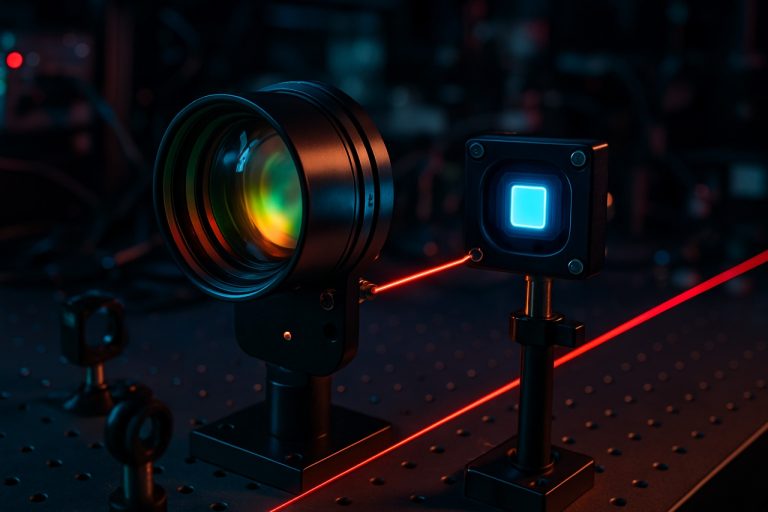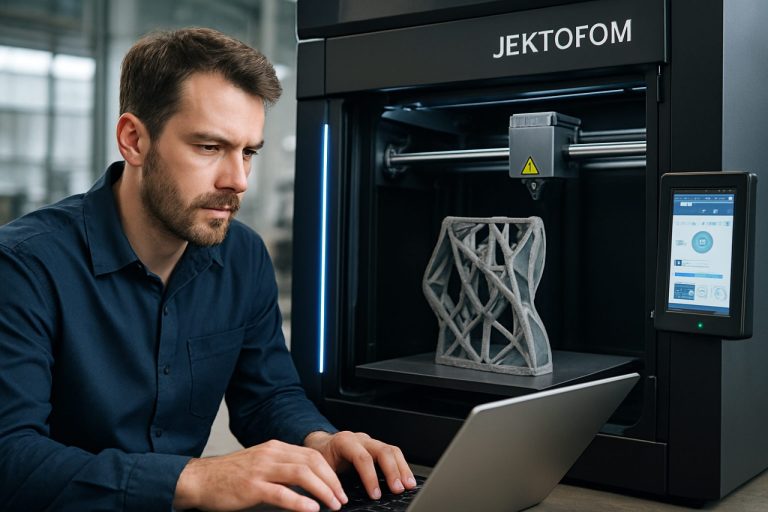
Quantum Topological Photonics in 2025: Pioneering Robust Quantum Networks and Next-Gen Photonic Devices. Explore How Topological Protection is Shaping the Future of Quantum Technologies.
- Executive Summary: Quantum Topological Photonics Market Outlook 2025–2030
- Technology Fundamentals: Topological States and Quantum Photonics Explained
- Key Industry Players and Strategic Collaborations (e.g., ibm.com, honeywell.com, ieee.org)
- Current Market Size, Segmentation, and 2025 Growth Drivers
- Breakthrough Applications: Quantum Communication, Sensing, and Computing
- Manufacturing Innovations and Material Science Advances
- Regulatory Landscape and Standardization Efforts (e.g., ieee.org, photonics.org)
- Investment Trends, Funding Rounds, and M&A Activity
- Market Forecasts: Revenue, Adoption Rates, and Regional Hotspots (2025–2030)
- Future Outlook: Challenges, Opportunities, and Roadmap to Commercialization
- Sources & References
Executive Summary: Quantum Topological Photonics Market Outlook 2025–2030
Quantum topological photonics is rapidly emerging as a transformative field at the intersection of quantum information science, photonic engineering, and topological physics. As of 2025, the sector is characterized by a surge in research activity and early-stage commercialization, driven by the promise of robust, low-loss photonic devices that leverage topological protection for quantum information processing, secure communications, and advanced sensing applications.
Key industry players and research institutions are accelerating the transition from laboratory demonstrations to scalable, manufacturable platforms. IBM and Intel are among the technology leaders investing in quantum photonics, with ongoing efforts to integrate topological photonic components into quantum computing architectures. National Institute of Standards and Technology (NIST) continues to play a pivotal role in standardization and metrology, supporting the development of reliable quantum photonic devices.
In 2025, the market outlook is shaped by several converging trends:
- Platform Integration: Silicon photonics remains the dominant platform for integration, with companies such as Intel and imec advancing CMOS-compatible topological photonic circuits. These efforts are expected to yield prototype devices with improved scalability and manufacturability by 2026–2027.
- Quantum Communication: The demand for secure quantum communication networks is driving investment in topologically protected photonic channels, with Toshiba and ID Quantique exploring topological approaches to enhance robustness against noise and fabrication defects.
- Advanced Sensing: Topological photonic sensors, leveraging edge states immune to disorder, are under development for applications in metrology and biomedical diagnostics. NIST and leading academic consortia are expected to demonstrate field-deployable prototypes within the next few years.
- Global Collaboration: International initiatives, including those led by EuroQCI and U.S. National Quantum Initiative, are fostering cross-border R&D and standardization, accelerating the path to commercialization.
Looking ahead to 2030, the quantum topological photonics market is poised for significant growth, underpinned by advances in materials science, device engineering, and quantum system integration. The next five years will be critical for overcoming technical barriers, establishing industry standards, and demonstrating clear advantages over conventional photonic and quantum technologies. As these milestones are achieved, the sector is expected to transition from niche research to broader commercial adoption, with applications spanning quantum computing, secure communications, and precision sensing.
Technology Fundamentals: Topological States and Quantum Photonics Explained
Quantum topological photonics is an emerging field at the intersection of quantum optics and topological physics, aiming to harness the unique properties of topological states for robust manipulation and transmission of quantum information using light. The core concept revolves around engineering photonic systems—such as waveguides, resonators, and lattices—so that they exhibit topologically protected states. These states are immune to certain types of disorder and imperfections, a property that is highly desirable for quantum technologies where decoherence and loss are major challenges.
Topological states in photonics are typically realized by designing artificial structures that mimic the behavior of electrons in topological insulators, but with photons. This is achieved through precise control of the geometry and refractive index of photonic materials, often using advanced nanofabrication techniques. In quantum photonics, these topological features are leveraged to protect quantum states of light, such as single photons or entangled photon pairs, from scattering and defects, thereby enabling more reliable quantum communication and computation.
Recent years have seen significant progress in the experimental realization of topological photonic systems. For example, researchers have demonstrated topologically protected edge states in photonic crystals and waveguide arrays, where light can propagate along the edges without backscattering, even in the presence of structural imperfections. These advances are being translated into quantum regimes, with experiments showing the preservation of quantum correlations and entanglement in topological photonic platforms.
Key enabling technologies include silicon photonics and integrated photonic circuits, which allow for scalable and reproducible fabrication of complex topological structures. Companies such as Intel and imec are at the forefront of developing silicon-based photonic chips, while startups like PsiQuantum and Xanadu are actively exploring quantum photonic processors that could benefit from topological protection. Additionally, research institutions and consortia, including Harvard-Smithsonian Center for Astrophysics and National Institute of Standards and Technology (NIST), are contributing foundational work in topological photonics and quantum device characterization.
Looking ahead to 2025 and beyond, the field is expected to advance toward practical quantum photonic devices that exploit topological protection for error-resilient quantum information processing. The integration of topological photonic elements with quantum light sources and detectors on a single chip is a key milestone anticipated in the next few years. This progress will be crucial for the realization of scalable quantum networks and fault-tolerant quantum computers, positioning quantum topological photonics as a foundational technology in the quantum era.
Key Industry Players and Strategic Collaborations (e.g., ibm.com, honeywell.com, ieee.org)
Quantum topological photonics is rapidly emerging as a transformative field, leveraging the unique properties of topological phases of light to enable robust quantum information processing and communication. As of 2025, the sector is characterized by a dynamic interplay between leading technology companies, specialized photonics manufacturers, and collaborative research initiatives. These efforts are accelerating the translation of fundamental discoveries into scalable, real-world quantum photonic devices.
Among the most prominent industry players, IBM continues to invest heavily in quantum photonics research, building on its established leadership in quantum computing. IBM’s collaborations with academic institutions and photonics startups are focused on integrating topological photonic circuits with superconducting and spin-based quantum processors, aiming to enhance error resilience and scalability. Similarly, Honeywell—through its quantum division, now part of Quantinuum—has announced partnerships with photonic component suppliers to explore topologically protected photonic qubits for next-generation quantum computers.
In the photonics manufacturing sector, Infinera and Lumentum are actively developing integrated photonic platforms that support topological states of light. These companies are collaborating with quantum hardware startups and research consortia to prototype chip-scale devices that exploit topological protection for low-loss, high-fidelity quantum information transfer. Their efforts are supported by advances in nanofabrication and materials engineering, which are critical for realizing the complex geometries required for topological photonic lattices.
On the standards and research front, organizations such as the IEEE and the Optica (formerly OSA) are playing a pivotal role in fostering cross-sector collaboration. IEEE’s Quantum Initiative and Optica’s Quantum Photonics Technical Group are convening industry, academia, and government stakeholders to define interoperability standards, share best practices, and accelerate the commercialization of topological photonic technologies.
Looking ahead, the next few years are expected to see intensified strategic collaborations, with major players forming consortia to address key challenges such as device integration, error correction, and scalable manufacturing. The convergence of expertise from quantum computing giants, photonics manufacturers, and standards bodies is poised to drive the maturation of quantum topological photonics from laboratory demonstrations to practical, deployable systems by the late 2020s.
Current Market Size, Segmentation, and 2025 Growth Drivers
Quantum topological photonics, an emerging field at the intersection of quantum optics and topological physics, is rapidly gaining traction as a foundational technology for next-generation photonic devices. As of 2025, the market for quantum topological photonics remains in its nascent stage, primarily driven by research and early-stage commercialization efforts. The sector is characterized by a blend of academic spin-offs, established photonics manufacturers, and quantum technology startups, all vying to leverage the unique properties of topologically protected photonic states for robust, low-loss, and scalable quantum information processing.
The current market size is difficult to quantify precisely due to the overlap with broader quantum photonics and integrated photonics sectors. However, investments and funding rounds in 2023–2025 indicate a growing commercial interest. For example, companies such as Infinera Corporation and Lumentum Holdings—both recognized for their advanced photonic integration platforms—have signaled interest in topological photonics through research collaborations and patent filings. Meanwhile, quantum technology leaders like Quantinuum and Paul Scherrer Institute are exploring topological photonic circuits for quantum computing and secure communications.
Segmentation within the quantum topological photonics market is emerging along several axes:
- Application: Quantum computing, quantum communication, and quantum sensing are the primary application areas. Quantum computing is expected to be the largest segment, driven by the need for error-resilient photonic qubits and scalable architectures.
- Component Type: The market includes topological photonic chips, waveguides, resonators, and integrated circuits. Photonic chips with topological protection are attracting the most investment due to their potential for integration into existing quantum hardware.
- End User: Research institutions, government labs, and early-adopter technology companies constitute the main customer base in 2025, with gradual expansion toward telecom and data center operators anticipated in the coming years.
Key growth drivers for 2025 and beyond include increased public and private funding for quantum technologies, advances in nanofabrication enabling scalable topological photonic devices, and the urgent demand for robust quantum hardware. The European Union’s Quantum Flagship and the U.S. National Quantum Initiative are channeling significant resources into photonic quantum technologies, accelerating both R&D and commercialization. Additionally, partnerships between photonics manufacturers and quantum startups are expected to yield prototype devices and pilot projects, setting the stage for broader market adoption by 2027.
Breakthrough Applications: Quantum Communication, Sensing, and Computing
Quantum topological photonics is rapidly emerging as a transformative field, leveraging the unique properties of topological phases of light to enable robust, scalable, and efficient quantum technologies. In 2025, the focus is intensifying on breakthrough applications in quantum communication, sensing, and computing, with several industry and academic collaborations pushing the boundaries of what is technologically feasible.
A key advantage of topological photonic systems is their inherent robustness against disorder and fabrication imperfections, which is critical for practical quantum devices. This robustness is being harnessed to develop photonic circuits that can reliably transmit quantum information over long distances, a foundational requirement for quantum communication networks. Companies such as Nokia and NEC Corporation are actively exploring integrated photonic platforms for secure quantum key distribution (QKD), with topological photonics offering pathways to more stable and scalable solutions.
In quantum sensing, topological photonic devices are being engineered to achieve unprecedented sensitivity and noise resilience. The unique edge states in topological photonic crystals can confine and guide light with minimal loss, enabling the detection of minute changes in environmental parameters. Research groups collaborating with industry leaders like Thorlabs are developing prototype sensors that exploit these properties for applications ranging from biomedical diagnostics to environmental monitoring.
Quantum computing is another area where topological photonics is making significant strides. The integration of topologically protected photonic qubits into quantum processors promises to mitigate decoherence and error rates, two of the most significant challenges in scaling quantum computers. Companies such as IBM and Intel are investing in research to incorporate topological photonic elements into their quantum hardware roadmaps, aiming to demonstrate error-resilient quantum gates and interconnects within the next few years.
Looking ahead, the outlook for quantum topological photonics is highly promising. The convergence of advanced nanofabrication, materials science, and quantum optics is expected to yield commercially viable devices by the late 2020s. Standardization efforts, led by organizations such as the International Telecommunication Union, are underway to ensure interoperability and security in quantum communication networks. As these technologies mature, quantum topological photonics is poised to play a pivotal role in the realization of robust, scalable quantum systems across communication, sensing, and computing domains.
Manufacturing Innovations and Material Science Advances
Quantum topological photonics is rapidly advancing, driven by innovations in manufacturing techniques and breakthroughs in material science. As of 2025, the field is witnessing a convergence of scalable fabrication methods and the discovery of novel materials that enable robust, low-loss photonic devices with topologically protected states. These advances are crucial for the realization of next-generation quantum information systems, secure communications, and highly sensitive sensors.
A key trend is the integration of topological photonic structures onto silicon photonics platforms, leveraging mature CMOS-compatible processes. Companies such as Intel Corporation and imec are actively exploring the incorporation of topological insulator materials and engineered lattices into their photonic integrated circuits (PICs). This approach promises mass manufacturability and compatibility with existing semiconductor infrastructure, a critical step toward commercial deployment.
Material science breakthroughs are equally pivotal. The synthesis of two-dimensional (2D) materials, such as transition metal dichalcogenides (TMDs) and bismuth-based compounds, has enabled the fabrication of photonic crystals and waveguides with unprecedented control over light-matter interactions. Research consortia and industrial partners, including Oxford Instruments, are providing advanced deposition and etching tools that allow for atomic-scale precision in constructing these materials. Such capabilities are essential for achieving the fine structural features required for topological protection at optical frequencies.
Additive manufacturing and nanoimprint lithography are also gaining traction for the scalable production of topological photonic devices. Companies like Nanoscribe GmbH are commercializing high-resolution 3D printing systems capable of fabricating complex photonic lattices directly onto chips. These techniques enable rapid prototyping and customization, accelerating the transition from laboratory demonstrations to practical devices.
Looking ahead, the next few years are expected to see further integration of quantum emitters—such as color centers in diamond or quantum dots—into topological photonic circuits. This will require continued advances in hybrid material integration and deterministic placement, areas where organizations like LioniX International are making significant progress. The synergy between material science and manufacturing innovation is poised to unlock new functionalities, including on-chip quantum networks and robust photonic logic gates, positioning quantum topological photonics as a cornerstone of future quantum technologies.
Regulatory Landscape and Standardization Efforts (e.g., ieee.org, photonics.org)
The regulatory landscape and standardization efforts for quantum topological photonics are rapidly evolving as the field transitions from fundamental research to early-stage commercialization. In 2025, the focus is on establishing frameworks that ensure interoperability, safety, and performance for emerging quantum photonic devices, particularly those leveraging topological protection for robust information transfer and processing.
Key industry bodies such as the IEEE and the Optica (formerly OSA) are at the forefront of these efforts. The IEEE, through its Photonics Society, has initiated working groups to address standards for quantum photonic components, including sources, detectors, and integrated circuits. These groups are collaborating with academic and industrial stakeholders to define metrics for loss, fidelity, and topological robustness, which are critical for benchmarking device performance in quantum information applications.
Optica, as a leading global society for optics and photonics, is facilitating consensus-building workshops and technical committees focused on quantum photonics. In 2024 and 2025, Optica has prioritized the development of best practices for characterizing topological photonic systems, with an emphasis on reproducibility and scalability. These efforts are expected to culminate in the publication of technical guidelines and recommended procedures, which will serve as precursors to formal standards.
On the international front, the International Electrotechnical Commission (IEC) and the International Organization for Standardization (ISO) are monitoring developments in quantum photonics, with preliminary discussions underway to harmonize standards across regions. The IEC’s Technical Committee 86 (Fibre optics) and ISO’s Technical Committee 172 (Optics and photonics) are both considering the unique requirements of quantum and topological photonic devices, such as the need for ultra-low-loss materials and precise control of photonic band structures.
Looking ahead, regulatory agencies in the US, EU, and Asia are expected to issue guidance on the safe deployment of quantum photonic technologies, particularly in sectors like secure communications and quantum computing. The next few years will likely see the introduction of certification schemes for quantum photonic components, driven by the need for trust and reliability in critical infrastructure. As the field matures, close collaboration between industry, academia, and standards organizations will be essential to ensure that regulatory frameworks keep pace with technological innovation in quantum topological photonics.
Investment Trends, Funding Rounds, and M&A Activity
Quantum topological photonics, an emerging field at the intersection of quantum information science and topological materials, is attracting increasing attention from both public and private investors. As of 2025, the sector is witnessing a notable uptick in venture capital activity, strategic partnerships, and early-stage funding, driven by the promise of robust, fault-tolerant photonic devices for quantum computing, secure communications, and advanced sensing.
Several leading quantum technology companies are expanding their portfolios to include topological photonics. IonQ, a pioneer in trapped-ion quantum computing, has signaled interest in integrating topological photonic components to enhance the stability and scalability of their quantum processors. Similarly, Paul Scherrer Institute in Switzerland, a major European research center, is collaborating with industry partners to commercialize topological photonic devices, leveraging their expertise in advanced materials and photonic integration.
On the funding front, 2024 and early 2025 have seen a series of seed and Series A rounds targeting startups focused on topological photonics. Notably, Quantinuum—formed from the merger of Honeywell Quantum Solutions and Cambridge Quantum—has announced new investments in photonic quantum technologies, with a portion earmarked for topological approaches. These investments are often supported by government innovation funds in the US, EU, and Asia, reflecting the strategic importance of quantum photonics for national security and technological leadership.
Mergers and acquisitions are also shaping the landscape. In late 2024, Thorlabs, a global photonics manufacturer, acquired a minority stake in a European startup specializing in topological photonic chips, aiming to accelerate the commercialization of robust photonic circuits for quantum and classical applications. Meanwhile, Hamamatsu Photonics has expanded its R&D collaborations with academic groups working on topological light-matter interactions, signaling potential future acquisitions or joint ventures.
Looking ahead, the next few years are expected to bring further consolidation as established quantum hardware companies seek to integrate topological photonics into their platforms. The sector is also likely to benefit from increased cross-border investment, particularly as Asian and European governments ramp up funding for quantum-enabled photonic technologies. As the field matures, successful exits—either through IPOs or acquisitions by major photonics and quantum computing firms—are anticipated, underscoring the growing commercial viability of quantum topological photonics.
Market Forecasts: Revenue, Adoption Rates, and Regional Hotspots (2025–2030)
Quantum topological photonics, an emerging field at the intersection of quantum information science and topological materials, is poised for significant growth between 2025 and 2030. This sector leverages the unique properties of topological states of light to enable robust, low-loss photonic devices, with applications spanning quantum computing, secure communications, and advanced sensing. As of 2025, the market remains in its early commercialization phase, but several indicators point to accelerating adoption and revenue growth in the coming years.
Revenue forecasts for quantum topological photonics are challenging due to the nascent nature of the technology and the overlap with broader quantum photonics and integrated photonics markets. However, industry leaders and research consortia anticipate a compound annual growth rate (CAGR) exceeding 30% through 2030, driven by increasing investments from both public and private sectors. The integration of topological photonic components into quantum computing platforms and next-generation optical interconnects is expected to be a primary revenue driver. Companies such as Infinera Corporation and Lumentum Holdings—both recognized for their advanced photonic integration capabilities—are actively exploring topological photonic designs to enhance device robustness and scalability.
Adoption rates are projected to rise sharply as prototype devices transition from laboratory demonstrations to commercial pilot projects. In 2025, adoption is primarily concentrated among leading research institutions and select industry partners engaged in collaborative projects. By 2027, broader uptake is anticipated in sectors requiring ultra-reliable photonic circuits, such as quantum key distribution (QKD) and photonic quantum computing. The involvement of major photonics manufacturers, including Hamamatsu Photonics and Thorlabs, in developing and supplying topological photonic components is expected to further accelerate market penetration.
Regionally, North America and Europe are currently the primary hotspots for quantum topological photonics innovation and commercialization. The United States benefits from strong federal funding and a robust ecosystem of quantum technology startups and established photonics firms. The European Union, through initiatives such as the Quantum Flagship, is fostering cross-border collaboration and supporting the development of topological photonic platforms. Asia-Pacific, led by Japan and China, is rapidly increasing its investment in quantum photonics infrastructure, with companies like Nippon Telegraph and Telephone Corporation (NTT) and NEC Corporation expanding their research and development activities in this domain.
Looking ahead, the convergence of quantum information science and topological photonics is expected to unlock new commercial opportunities, with the market entering a phase of accelerated growth and broader adoption by the end of the decade.
Future Outlook: Challenges, Opportunities, and Roadmap to Commercialization
Quantum topological photonics, an emerging field at the intersection of quantum optics and topological physics, is poised for significant advancements in 2025 and the following years. The sector is driven by the promise of robust, disorder-resistant photonic devices that leverage topological protection for quantum information processing, communications, and sensing. However, the path to commercialization is marked by both technical challenges and unique opportunities.
One of the primary challenges remains the scalable fabrication of topological photonic structures with quantum-level control. While academic demonstrations have shown topologically protected edge states in photonic lattices and waveguides, translating these into manufacturable, reproducible devices is nontrivial. Leading photonics manufacturers such as Hamamatsu Photonics and Thorlabs are investing in advanced nanofabrication and integration techniques, aiming to bridge the gap between laboratory prototypes and scalable commercial products. The integration of quantum emitters—such as quantum dots or color centers—into topological photonic platforms is another technical hurdle, requiring precise material engineering and hybrid integration strategies.
On the opportunity side, quantum topological photonics offers a pathway to devices with unprecedented robustness against fabrication imperfections and environmental noise. This is particularly attractive for quantum communication networks and photonic quantum computing, where error rates and device stability are critical. Companies like Carl Zeiss and TRUMPF are exploring photonic integration and quantum technologies, with potential to incorporate topological designs into their product roadmaps. Additionally, the field is attracting interest from quantum technology consortia and government-backed initiatives in the US, EU, and Asia, which are providing funding and infrastructure for pilot manufacturing lines and testbeds.
Looking ahead, the roadmap to commercialization will likely involve a phased approach. In the near term (2025–2027), expect to see demonstration projects and pilot products targeting niche applications such as quantum-secure communications, topologically protected delay lines, and robust photonic sensors. Standardization efforts, led by industry bodies and collaborative research centers, will be crucial for interoperability and market adoption. As fabrication yields improve and integration challenges are addressed, broader adoption in quantum computing and large-scale photonic circuits is anticipated toward the end of the decade.
In summary, while quantum topological photonics faces significant technical and manufacturing challenges, the sector is buoyed by strong industry engagement and a clear value proposition. The next few years will be pivotal in moving from proof-of-concept to practical, commercial devices, with leading photonics companies and research organizations playing a central role in shaping the field’s trajectory.
Sources & References
- IBM
- National Institute of Standards and Technology (NIST)
- imec
- Toshiba
- ID Quantique
- Xanadu
- Harvard-Smithsonian Center for Astrophysics
- Honeywell
- Infinera
- Lumentum
- IEEE
- Quantinuum
- Paul Scherrer Institute
- Nokia
- NEC Corporation
- Thorlabs
- International Telecommunication Union
- Oxford Instruments
- Nanoscribe GmbH
- LioniX International
- International Organization for Standardization (ISO)
- IonQ
- Hamamatsu Photonics
- Carl Zeiss
- TRUMPF



